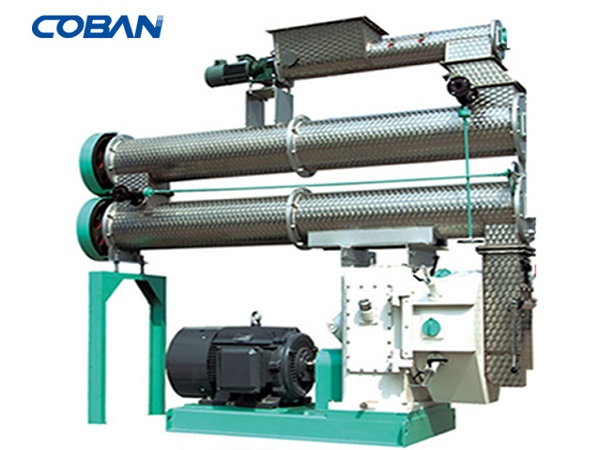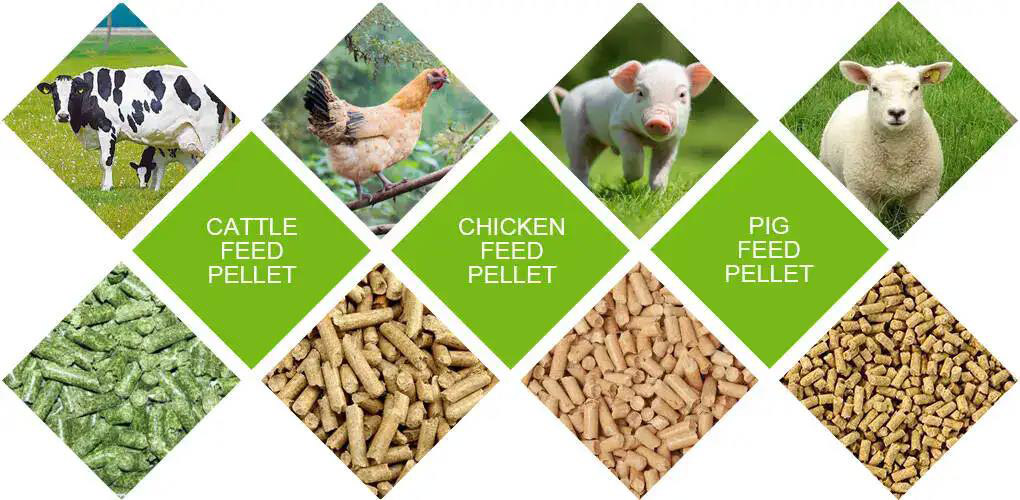animal feed processing plant
An animal feed processing plant is a facility or workplace specifically engaged in the production and processing of animal feed. In such plants, raw materials undergo a series of treatments and processes, including mixing, grinding, shaping, drying, cooling, packaging, etc., to produce feed products suitable for various animals’ consumption.
animal feed processing plant Introduction
An animal feed processing plant is a facility or workplace specifically engaged in the production and processing of animal feed. In such plants, raw materials undergo a series of treatments and processes, including mixing, grinding, shaping, drying, cooling, packaging, etc., to produce feed products suitable for various animals’ consumption. These plants typically produce a variety of types and specifications of feed products according to different types of animals, different growth stages, and various nutritional requirements. Animal feed processing plants play a vital role in livestock farming and animal husbandry, providing essential support for improving animal growth efficiency and promoting the health development of livestock and poultry.


Characteristics of Animal Feed Processing Plants
Production equipment
Having various production equipment and processing machinery, such as mixers, crushers, pelletizers, dryers, coolers, packaging machines, etc., to complete different stages of feed production.
Raw material storage and handling
Having facilities for storing various raw materials and equipment for processing, cleaning, sorting, and processing the raw materials.
Nutritional formulation technology
Having professional feed formulation technology and equipment to scientifically formulate various nutritional components according to the needs of different animals, producing feed products that meet their nutritional requirements.
Quality control system
Establishing a comprehensive quality control system and quality testing equipment to conduct strict inspection and control of raw materials and finished products, ensuring stable and safe feed product quality.
Production standards and regulations
Strict adherence to relevant production standards and regulations to ensure the safety, hygiene, and environmental protection of the production process, in compliance with legal requirements.
Research and development innovation capabilities
Having feed research and development capabilities to continuously improve production processes and formulation technologies, enhancing product quality and market competitiveness.
Marketing network
Establishing a sound sales network and channels, forming cooperative relationships with farmers, distributors, etc., to ensure the saleability of products and market share.
Environmental awareness and responsibility
Focusing on environmental awareness, adopting energy-saving and emission reduction measures, actively fulfilling social responsibilities, and contributing to sustainable development.


Structure of an Animal Feed Processing Plant
Raw material receiving and storage area
This is where raw materials such as grains, soybeans, minerals, vitamins, and additives are received, stored, and managed before processing.
Grinding and milling section
In this section, raw materials are ground or milled into a suitable particle size to enhance digestibility and facilitate mixing.
Mixing and batching section
Here, various ground ingredients are accurately weighed, mixed, and blended according to specific formulations to ensure uniform distribution of nutrients.
Pelleting or extrusion section
This section transforms the mixed ingredients into pellets or extruded feeds using pellet mills or extruders, respectively. Pelleting improves feed handling and reduces waste, while extrusion enhances digestibility and nutrient availability.
Drying and cooling section
Newly formed pellets or extruded feeds are dried to reduce moisture content and cooled to prevent degradation and microbial growth.
Screening and grading section
This section removes fines, oversized particles, and impurities from the finished products to improve product quality and consistency.
Coating, oiling, and packaging section
Finished feeds may undergo coating or oiling processes for improved palatability, nutrient retention, and shelf life. They are then packaged into bags, totes, or bulk containers for distribution and sale.
Quality control and laboratory
A dedicated area for quality control testing and analysis ensures that raw materials and finished products meet regulatory standards and customer specifications.
Utilities and support systems
These include systems for water supply, electrical power, steam generation, dust extraction, and waste disposal to support the operations of the processing plant.


Advantages of Animal Feed Processing Plant
Product diversification
The processing plant can produce a variety of feed types according to the needs of different animals and market demands, catering to various farmers’ requirements.
Balanced nutrition
Through scientific formulation and precise processing, the plant can produce feed with balanced nutrition containing essential nutrients, conducive to animal growth and health.
High production efficiency
With advanced equipment and technology, the plant can achieve large-scale production, enhancing production efficiency and reducing costs.
Stable quality
The plant strictly controls raw material procurement, production processes, and product quality, ensuring stable product quality that meets standards and regulations.
Environmental sustainability
Some plants adopt energy-saving and environmentally friendly measures to reduce resource wastage and environmental pollution, improving production efficiency and sustainability.
Technological innovation
The plant continuously introduces new technologies and equipment, engages in research collaborations, improves product quality and technical content, and enhances market competitiveness.
Safety and reliability
The plant establishes a sound quality management system and safety production regulations, ensuring employee safety, product quality, and consumer health.
Strong market competitiveness
High product quality, stable supply capacity, and excellent after-sales service give the processing plant a competitive advantage in the market, with a stable customer base and market share.
Application of animal feed processing plant
Typically, the production of animal feed processing plant uses raw materials such as corn, soybeans, wheat, and other nutrients as the formula. Our small feed mill plant are specially used to produce feed for poultry, livestock, pigs, horses, cattle, sheep, chickens, ducks, goose and other animals.For different animals, with different growth cycles, (chicks, suckling pigs, calves, etc.), the feed pellet size required is different, but our feed production line only needs to replace ring molds with different apertures or use a pellet crumbler to reach the required size.

Parameter of animal feed processing plant
| Model | Capacity | Main Motor Power | Feeder Motor Power | Conditioner Power | Dia. of Ring Die | Pellet Size |
| SZLH250 | 1-2T/H | 22KW | 0.75kw | 1.5kw | 250mm | 2-12mm |
| SZLH320 | 3-4T/H | 37KW | 1.5kw | 2.2kw | 320mm | 2-12mm |
| SZLH350 | 5-7T/H | 55KW | 1.5kw | 3kw | 350mm | 2-12mm |
| SZLH420 | 8-12T/H | 110KW | 1.5kw | 7.5kw | 420mm | 2-12mm |
| SZLH508 | 10-18T/H | 160KW | 2.2kw | 11kw | 508mm | 2-12mm |
| SZLH558 | 15-25T/H | 180KW | 2.2kw | 11kw | 558mm | 2-12mm |
| SZLH678 | 20-30T/H | 220KW | 2.2kw | 11kw | 678mm | 2-12mm |
| SZLH768 | 25-42T/H | 280KW | 2.2kw | 11kw | 768mm | 2-12mm |







